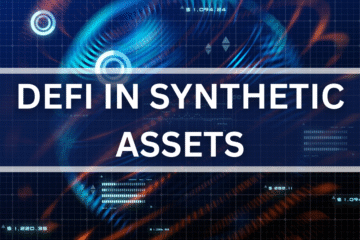DeFAI and James Wynn: A Tale of Hype, Losses, and Market Dynamics

The intersection of DeFAI (Decentralized Finance + Artificial Intelligence) and the broader crypto market has been electrified by figures like James Wynn, whose high-stakes trading saga on Hyperliquid has captivated the crypto community in 2025. While DeFAI represents a technological evolution aimed at simplifying DeFi through AI-driven tools, Wynn’s story underscores the speculative frenzy and volatility that continue to define parts of the crypto space. This response ties Wynn’s narrative to the broader DeFAI trends, analyzes his trading timeline, and explores the implications for the DeFAI ecosystem.
James Wynn’s Trading Saga: A Recap
James Wynn, a pseudonymous trader known as the “Hyperliquid Whale,” became a focal point in 2025 for his audacious, high-leverage trades on Hyperliquid, a Layer-1 blockchain optimized for DeFi applications. His journey, marked by meteoric gains and catastrophic losses, offers a lens into the speculative excesses that DeFAI aims to address through smarter, AI-driven solutions.
Timeline of Wynn’s Trades and Statements
- March 2025: Wynn began trading on Hyperliquid, depositing $4.65 million in USDC. He had no prior experience with derivatives, focusing primarily on meme coins like PEPE, where he turned a $7,000 investment into $25 million in 2022. Over two months, he executed 38 trades with a 45% win rate, peaking at $87 million in profits by May 23.
- May 19–24: Wynn opened a $1.25 billion Bitcoin long position with 40x leverage, starting with $830 million on May 21. He briefly held $40 million in unrealized profits as BTC crossed $110,000 but incurred a $13.4 million loss after closing part of the position. By May 24, his position hit $1.25 billion, but Bitcoin’s dip below $105,000, influenced by U.S. tariff talks, led to liquidations.
- May 25–26: Wynn closed his $1.2 billion BTC long for a $17.5 million loss and opened a $1 billion short position, losing another $13.4 million, totaling $23.7 million in 24-hour losses. He then shifted to a $20 million PEPE long at 10x leverage. He announced a temporary exit from perpetual trading, claiming $25 million in profits, but resumed trading hours later.
- May 29–30: Wynn’s leveraged BTC positions were liquidated for $99.3 million as Bitcoin fell below $105,000, with specific liquidations of 527.29 BTC ($55.3 million), 421.8 BTC ($43.9 million), and 94 BTC ($10 million). He expressed defiance on X, posting, “Zero regrets. Flipping $4 million to $100 million and back down to -$13 million is one hell of a thrill.”
- May 31: Facing $96 million in weekly losses and a cumulative $14.03 million account loss, Wynn aggregated $3.25 million across wallets to open new BTC and PEPE longs. His real position value dropped to $800,000. He posted, “I’ll run it back, I always do. I like playing the game,” and dismissed $100 million as “a drop in the bucket” for a mullionaires, emphasizing his passive income and wealth.
- June 1–2: Wynn called for community support, asking for USDC deposits to lower his liquidation price, raising 39,345.11 USDC. He sold 126,116 HYPE tokens for $4.13 million and opened a $99.5 million BTC long, which briefly turned profitable by $400,000 before new losses. He deleted a controversial “fundraising” post, fueling speculation of a Hyperliquid marketing stunt.
- June 2–3: Wynn announced a pause from perpetual trading but resumed with a $2 million deposit and a 40x BTC long, which lost 73% ($900,000) initially. He accused market manipulation and Wintermute, claiming his trades were “sniped.”
- June 4–6: Wynn was liquidated for $25 million on a 240 BTC position, with an unrealized $1 million loss on an $80.5 million BTC long. His total losses reached $17.5 million, leaving his account with just $23. He changed his X profile picture to a McDonald’s Wojak, signaling defeat, and admitted to turning $3 million into $100 million and losing it all due to greed and emotional trading.
- June 7: Wynn reported insomnia and panic attacks, hinting at a comeback, possibly with Binance, and criticized Hyperliquid’s referral model. He transferred $1.91 million in USDC to centralized exchanges (KuCoin, MEXC, Gate), suggesting a shift from Hyperliquid.
Wynn’s Reflections and Community Reactions
Wynn’s candid June 6, 2025, X post revealed his lack of derivatives experience and reckless pursuit of losses, driven by greed and a desire to avoid looking “like an idiot.” His McDonald’s Wojak avatar and $20 million-plus loss cemented his image as a cautionary tale. Crypto KOLs like @scooter and Eugene Ng criticized his approach, with @scooter calling his losses a consequence of easy-come-easy-go gains and Ng warning of leverage’s dangers. Arthur Hayes and others speculated Wynn’s actions might be a Hyperliquid marketing ploy, noting his frequent platform mentions and $2.31 million in fees generated.
DeFAI’s Role in Mitigating Such Risks
Wynn’s saga highlights the challenges DeFAI aims to address. His high-leverage, emotion-driven trades contrast with DeFAI’s focus on AI-driven automation and risk management. The three core DeFAI applications could have potentially mitigated his losses:
- AI-Driven Interaction Interfaces:
- DeFAI’s natural language interfaces (e.g., Heyanon.ai’s tools) could have simplified Wynn’s complex, high-stakes trades, reducing errors from manual execution across multiple protocols. For instance, AI could have optimized trade paths, minimizing slippage and fees.
- Autonomous DeFi Smart Agents:
- AI agents, like those from Almanak or Cod3x, could have executed Wynn’s strategies with dynamic risk management, automatically adjusting leverage, monitoring market sentiment, and selecting secure protocols. Such agents might have prevented Wynn’s narrow liquidation thresholds (2–3% below entry prices) from triggering massive losses.
- Intelligent Research and Information Agents:
- Research agents, such as Heyanon.ai’s Gemma, could have provided Wynn with real-time market data, whale tracking, and sentiment analysis, potentially deterring his impulsive “revenge trades.” These tools could have offered data-driven insights to counter emotional decisions, like his $1.25 billion BTC long during tariff-related volatility.
For example, the Snorter Bot, a Telegram-native trading assistant, offers sub-second execution, MEV-resistant relayers, and automated stop-loss orders, which could have helped Wynn avoid liquidation by setting safer entry points and stop-losses.
DeFAI Market Trends and Wynn’s Impact
Wynn’s trades significantly boosted Hyperliquid’s visibility, contributing to its $8.6 billion daily volume and 73.1% perps market share, with HYPE tokens surging 120%. However, his $200 million loss in a week underscores the risks of high-leverage trading without AI-driven discipline. DeFAI projects like Heyanon.ai, Griffain, and Orbit are gaining traction by offering solutions to such volatility:
- Heyanon.ai: Its AI-driven ecosystem, including Gemma, simplifies DeFi tasks and provides actionable insights, aligning with the trend toward utility-focused DeFAI tools.
- Griffain: A Solana-based leader, its market cap hit a new high in 2025, driven by smart agents that enhance cross-chain efficiency.
- Orbit: Supporting over 100 blockchains, Orbit’s GRIFT token is a DeFAI frontrunner, optimizing trading strategies with AI.
The DeFAI market, valued at $1.3 billion in February 2025, is projected to reach $10 billion by year-end, fueled by projects addressing speculative excesses like Wynn’s. The shift toward utility-driven agents (e.g., Orbit, HAT) over speculative tokens (e.g., Fartcoin) reflects a maturing market prioritizing sustainable innovation.
Speculation and Controversy
Speculation surrounds Wynn’s motives. Some, like Wintermute’s Evgeny Gaevoy, suggest his trades were a Hyperliquid marketing campaign, citing his $2.3 million in fees and frequent platform mentions. Others, like @liangxihuigui, allege Wynn hedged positions with anonymous wallets to manipulate markets, though no evidence confirms this. His deleted “fundraising” post and claims of CEX bans fueled conspiracy theories, with some linking him to Binance’s CZ for a potential DEX venture.
Conclusion: DeFAI’s Promise Amid Speculative Chaos
James Wynn’s rollercoaster—from $3 million to $100 million and back to a $17.5 million loss—illustrates the dangers of unchecked leverage and emotional trading, which DeFAI seeks to mitigate through AI automation, risk management, and data-driven decision-making. While Wynn’s actions boosted Hyperliquid’s profile, they also highlight the need for DeFAI’s disciplined approach. As DeFAI projects like Heyanon.ai, AI16Z, and Orbit grow, they promise a more inclusive, efficient DeFi ecosystem, potentially preventing future “Wynn-level” implosions and driving mass adoption in 2025 and beyond.
Disclaimer: This analysis is for informational purposes only and does not constitute financial advice. Crypto trading carries high risks, and investors should conduct thorough research and consult professionals before making decisions.










